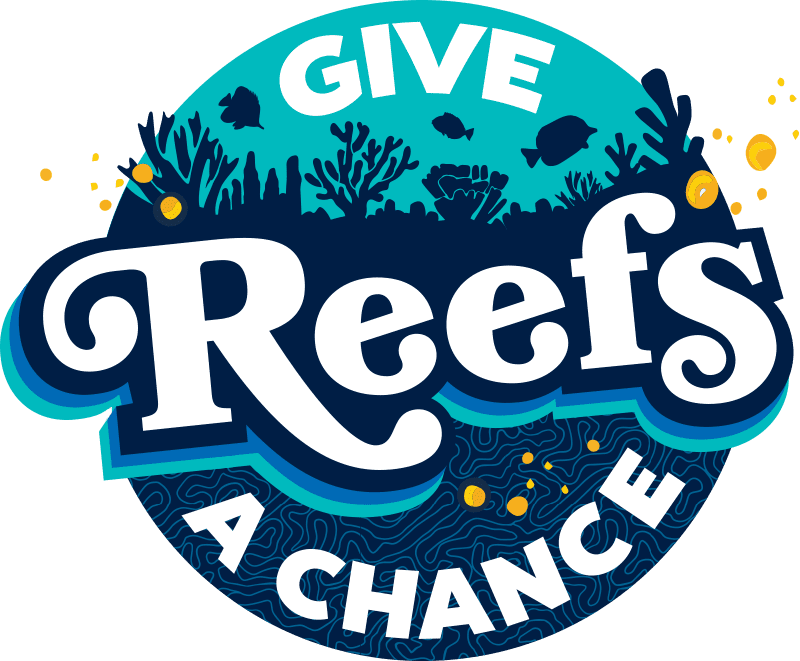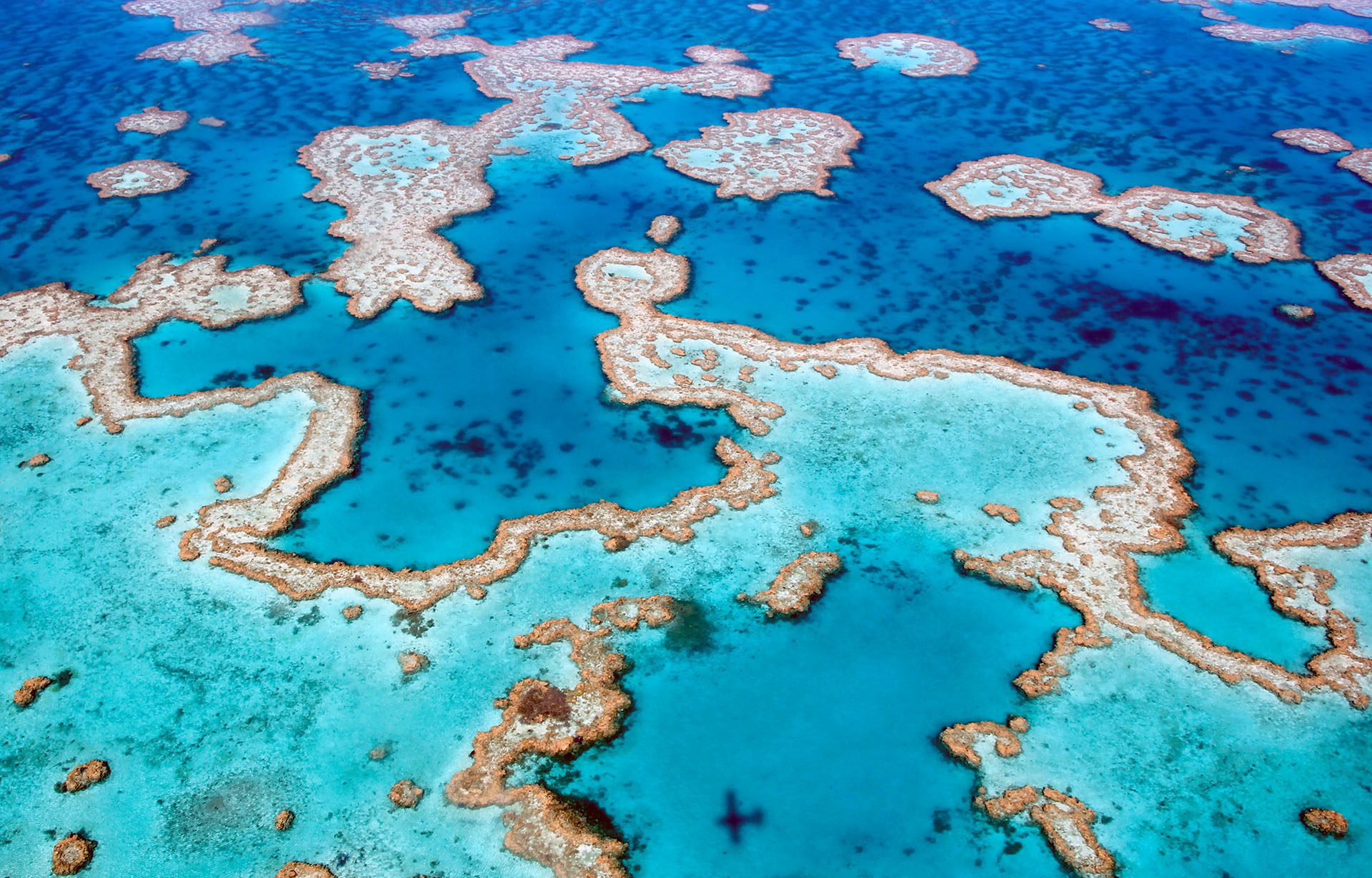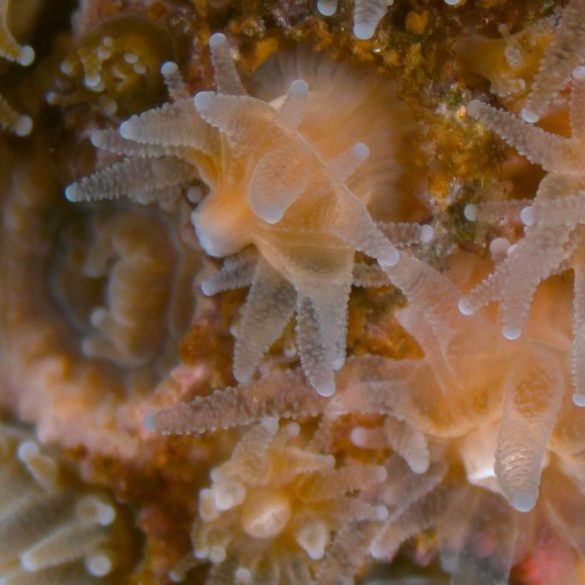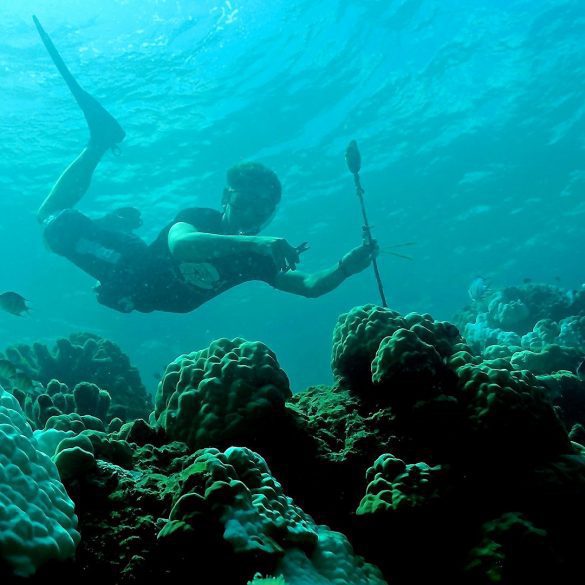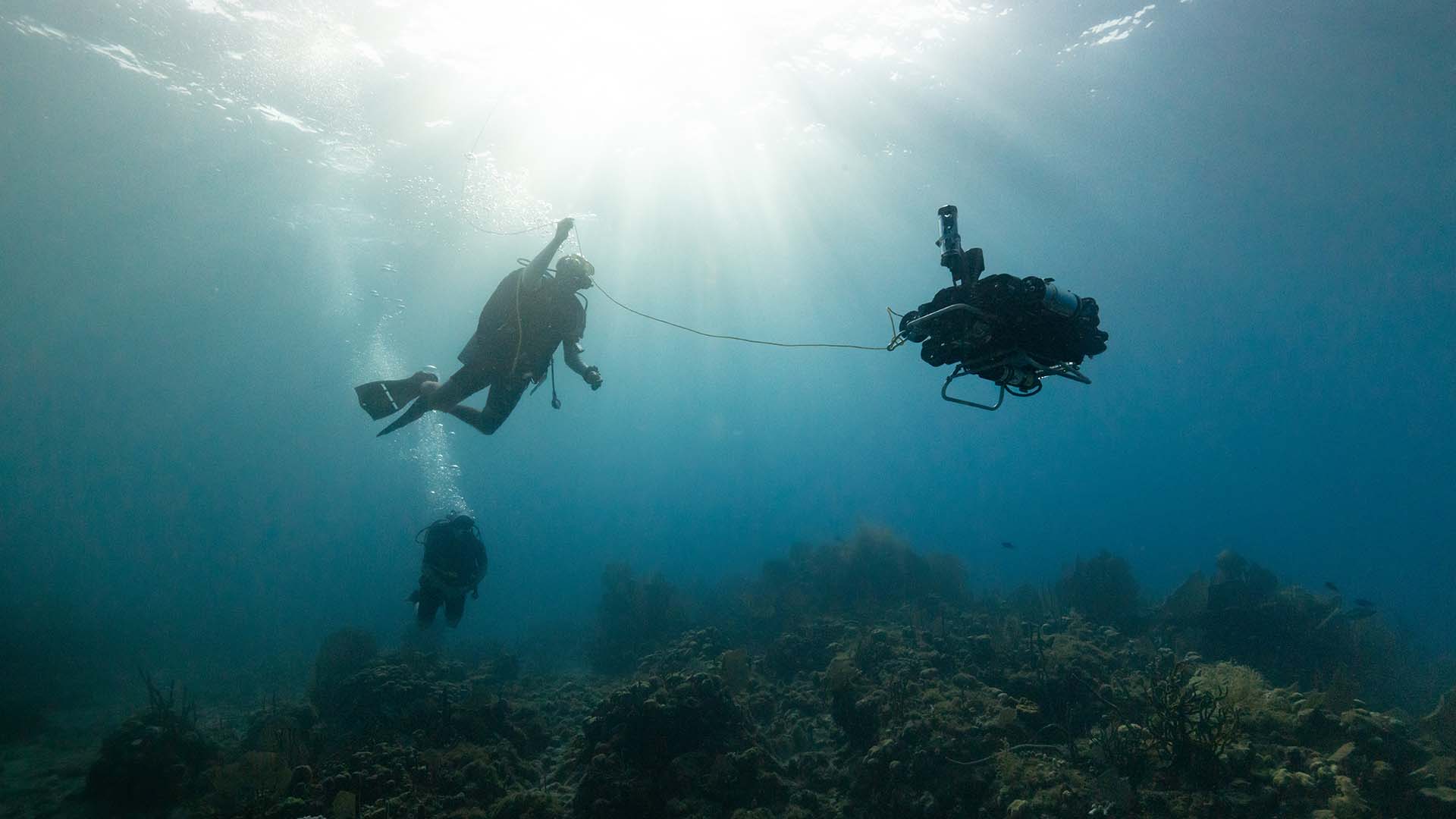Give Reefs a Chance » 4 potential solutions for corals in crisis
4 potential solutions for corals in crisis
The results are in, and the prognosis isn’t good—but there is hope. Half of the world’s coral reefs have disappeared in the last 70 years, and the rest could be gone by the end of the century if we don’t take action. Racing against the clock, researchers at WHOI and elsewhere are developing innovative solutions to rebuild reefs and improve coral resiliency–before it’s too late.
Through the Reef Solutions Initiative, Super Reefs, and dozens of independent research projects, these multi-disciplinary efforts are part of a rapidly growing international coral reef observation, diagnostics, and interventions network.

-
Coral probiotics
Just like humans host beneficial bacteria that help us absorb nutrients and fight pathogens, microbes help corals metabolize, build immunity, and withstand spikes in water temperature. This “microbiome”–or community of microbes–is unique to each reef, says microbial ecologist Amy Apprill, and corals tend to thrive in areas where the most beneficial microbes are found. That led her to wonder what would happen if corals, along with their microbial helpers, were moved from one reef to another–kind of like when you take a probiotic supplement or eat yogurt with active cultures. Her team tested this idea in experiments off the island of St. Croix, and are currently looking at how the microbial shift impacted coral growth and health. Their findings could help coral cultivation and replanting efforts, which traditionally have low rates of success. It may also lead to the development of probiotics that can be painted directly on corals to help boost their natural microbiome.
-
Plant a polyp, save a reef
When reefs experience repeated bleaching events, not all corals die. Scientists take it as a sign of hope that some coral species can withstand high rates of stress. By “looking under the hood” at certain coral genes, WHOI molecular biologists Ann Tarrant and Yaamini Venkataraman are trying to unlock the secrets of resilient coral strains. They hope this will help researchers breed ultra-resilient corals in the lab, similar to selecting drought-resistant plants. In the future, research divers will be able to “plant” these genetically advanced coral polyps in areas where they have a good chance of thriving.
Planting, or “re-seeding” coral sounds easier than it is. In Palau, WHOI biologist Kirstin Meyer-Kaiser is experimenting with raising the coral species Porites lobata in captivity from the spawning stage. Once the larvae settle, her team will plant the young coral in their home reefs or a nearby reef and measure their survival rates. Newly-settled corals face a number of challenges–predators, heat stress, and competition from other species–especially outside their home lagoons. Meyer-Kaiser’s goal is to understand whether heat-tolerant corals can survive in new reefs. If they can, these corals might be able to re-seed nearby reefs after bleaching events.
-
Next-gen artificial reefs
You may have heard about New York City train cars or cement sculptures being used to create artificial reefs. It turns out, these structures aren’t exactly popular with the next generation of coral. WHOI biogeochemist Colleen Hansel and marine chemist Matt Long are working on a 3D-printed ceramic reef structure that mimics the natural shape and texture corals need to grow, cling to during storms, and hide from predators. They’re also working on ways to infuse the ceramic with micronutrients like zinc, copper, and iron to give the budding corals an immunity boost. With WHOI microbial ecologist Amy Apprill. research into the right dosage is ongoing.
To really feel at home, corals need the right background music. Using underwater microphones, WHOI sensory biologist Aran Mooney records reef sounds to discover patterns in the underwater soundscape. Changes in these patterns provide an early warning system for scientists to take action before disease or other stressors take hold. They’ve even found that sounds of a healthy reef can help recruit coral and some fish larvae to a struggling area.
-
High-tech checkups
Diving trips to study reefs are fun, but they’re also super labor-intensive, expensive, and slow. Scientists want to maximize their efforts with underwater robots and sensors that can collect data faster, more often, and over a much wider area than possible for divers.
WHOI scientist Yogesh (Yogi) Girdhar and his team are developing an “ecologically curious robot” to monitor and understand complex reef ecosystems. Using Artificial Intelligence, the highly maneuverable WARPAUV can identify and track various reef species, detect different habitat types, and map reef systems in greater detail than previously possible. The WARPAUV team is working on ways to combine reef sounds with visual evidence of disease or damage to provide an early-warning system for reefs in peril. Because the robot’s movements are so precise, it can operate safely near fragile corals while taking chemical measurements, collecting water samples, and planting baby corals.
Portable underwater sensors collect important information about water chemistry, like temperature and salinity. But a new tool, developed by WHOI biogeochemist Colleen Hansel, measures a fast-changing molecule called superoxide, which scientists think is part of the coral’s immune response to stress. Tracking superoxide in real time would give scientists a powerful way to diagnose threatened reefs– but because its chemical signal only lasts for minutes underwater, it’s not possible to take a sample to an on-shore lab. Working with WHOI engineer Jason Kapit, Hansel developed the DIver-operated Submersible Chemiluminescent SensOr, or DISCO, which can measure superoxide while still underwater. The team has also adapted DISCO into a deep-sea version known as SOLARIS that allows WHOI’s human-occupied submersible, ALVIN, to take superoxide measurements from deep-sea corals. The team is currently miniaturizing and modifying the sensing technology of DISCO so that the small, low-cost sensors can be deployed on reefs or attached to AUVs.
If you’re a diver, you might soon be able to help the cause. Hansel, Kapit, and WHOI marine chemist Matt Long are working on a sensor package that can be attached to typical dive gear to take measurements of reef health and send it to a data visualization portal available to everyone. With millions of recreational dives taking place each year in reefs spanning the globe, that’s a lot of extra data points to help monitor reef health!


